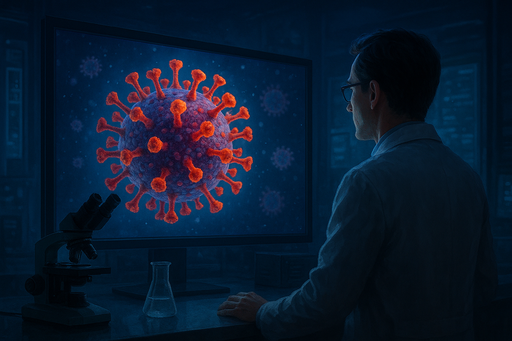Scientists at Stanford University have achieved a breakthrough by creating viruses using artificial intelligence for the first time. These synthesized bacteriophages can locate and destroy dangerous, antibiotic-resistant strains of Escherichia coli bacteria.

G. Ostrov
Researchers at Stanford University have achieved a significant breakthrough in biotechnology by successfully creating functional viruses using artificial intelligence for the first time. This revolutionary technology opens new possibilities for combating infections resistant to traditional treatment methods.
AI Virus Designer
To create new bacteriophages, researchers used specialized AI models Evo 1 and Evo 2, which were trained on millions of bacteriophage genomes — viruses that specialize in infecting bacteria. As a base template, scientists chose the well-studied and human-safe virus strain ФХ174.
Based on this template, artificial intelligence "assembled" numerous new variants of viral genomes potentially capable of attacking E. coli specifically. From thousands of proposed variants, researchers synthesized and tested 302 versions of bacteriophages.
Impressive Results
Experiments showed outstanding results: 16 variants of AI-created bacteriophages successfully destroyed E. coli strains that the natural virus could not handle. Combination therapy proved particularly effective — several bacteriophage variants working together attacked different bacterial varieties simultaneously.
Prospects and Applications
This technology could become a real breakthrough in creating new medications to fight infections that don't respond to traditional antibiotic treatment. The problem of antibiotic resistance is becoming increasingly acute, and new methods to combat resistant strains are desperately needed.
Safety Concerns
Understanding potential risks, researchers took serious precautionary measures. They excluded all viruses capable of infecting animals and humans from the training data, focusing exclusively on bacteriophages. Nevertheless, the very possibility of purposefully creating new viruses raises important questions about the potential dual-use nature of such technology.
Future of the Technology
Despite existing risks, the potential benefits of this technology are enormous. It could revolutionize approaches to treating infectious diseases and provide humanity with new tools in the fight against constantly evolving pathogens.
More detailed information about the research can be found on the official Stanford School of Medicine website.
If you encounter any problems, contact us, we will help quickly and efficiently!




